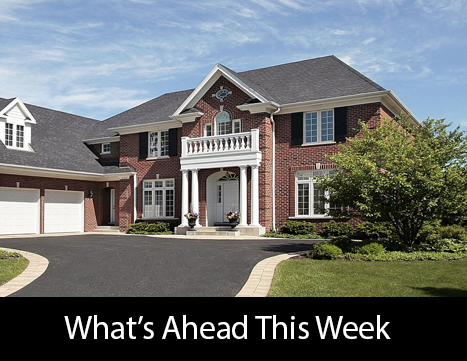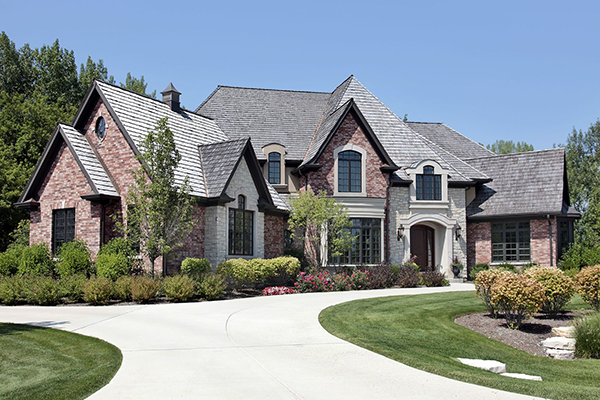What’s Ahead For Mortgage Rates This Week – September 26, 2016
 Last week’s economic news was abundant with releases on home builder sentiment, housing starts, building permits, sales of previously owned homes. The Federal Open Market Committee of the Federal Reserve released its customary statement at the conclusion of its meeting; Fed Chair Janet Yellen also gave a press conference. Weekly readings on new jobless claims and mortgage rates were released as usual.
Last week’s economic news was abundant with releases on home builder sentiment, housing starts, building permits, sales of previously owned homes. The Federal Open Market Committee of the Federal Reserve released its customary statement at the conclusion of its meeting; Fed Chair Janet Yellen also gave a press conference. Weekly readings on new jobless claims and mortgage rates were released as usual.
NAHB: Builder Sentiment Increases in September
Home builder confidence in housing market conditions increased in September according to the National Association of Home Builders Housing Market Index. Builder confidence rose five points to 65; analysts expected a reading of 60 based on August’s reading of 59. NAHB said that September’s reading was boosted by more “serious” buyers entering housing markets.
Components used to determine NAHB HMI readings were also higher. Builder confidence in current market conditions rose six points to 71; builder confidence in housing market conditions over the next six months rose by five points to 71. Builder confidence in buyer traffic in new housing developments rose four points to 48. Buyer traffic readings have not reached 50 since 2005; 50 is a neutral benchmark for NAHB HMI readings.
Home prices continue rising at a higher pace than wages; this is pressuring first-time and moderate income buyers out of the market. An ongoing shortage of available homes is pressing prices higher as demand increases. Analysts pay close attention to the NAHB HMI as building more new homes is a key factor in easing the shortage of homes for sale.
Housing Starts, Building Permits Lower
Commerce Department readings on housing starts and permits issued were lower for August Housing starts were lower in August at 1.142 million starts on a seasonally-adjusted annual pace. Analysts expected 1.182 million housing starts based on July’s reading of 1.212 million starts. Regional readings showed a dip in starts in the South. Severe flooding in Louisiana contributed to the lower reading for housing starts. August’s reading for housing starts was 5.80 percent lower than July’s reading and 0.90 percent lower than for July 2015.
Building permits issued were nearly flat in August; this was likely due to the prime building season winding down 1.139 million permits were issued as compared to 1.144 million permits issued in July. Single-family starts were six percent lower than for July and were 1.20 percent lower year-over-year.
Existing Home Sales Dip: High Demand, Low Supply Cited
Sales of pre-owned homes fell by 0.90 percent in August to a seasonally-adjusted annual rate of 5.33 million sales. Analysts expected a reading of 5.48 million sales; July’s reading for sales of pre-owned homes was 5.38 million sales.
Low inventory of available homes continues to impact housing markets as demand for homes increased and prices rose; the national average home price was $240,000 in August. Rising home prices continued to be driven by high demand and low supplies. These conditions also impacted first-time and moderate income home buyers who were pressured to keep up with rapidly rising home prices.
While mortgage rates remain relatively low, higher home prices and tight mortgage credit requirements remain obstacles for first-time buyers.
Mortgage Rates, Weekly Jobless Claims Lower
Freddie Mac reported lower mortgage rates last week. The average rate for a 30-year fixed rate mortgage fell by two basis points to 3.48 percent; the average rate for a15-year fixed rate mortgage fell on one basis point to 2.76 percent. The average rate for a 5/1 adjustable rate mortgage was lower by two basis points at 2.80 percent.
Analysts expected new jobless claims to remain flat at the prior week’s reading of 260,000 new claims, but 252,000 new claims were filed for the lowest reading since July. The four-week rolling average of new jobless claims fell by 22250 claims to 258,500. The four-week reading is considered a less volatile reading than week-to-week readings.
Federal Reserve: No Increase in Fed Rate
The Federal Open Market Committee said in its post-meeting statement that the target federal funds rate would not be raised. In a press conference given after the FOMC statement, Fed Chair Janet Yellen said that although the economy continued to improve, the Fed had concerns over the labor market and decided not to raise rates. Any increase in Federal Reserve rates triggers increases in consumer lending rates.
What’s Ahead
This week’s readings include Case-Shiller Home Price Indices, readings on new and pending home sales and weekly readings on mortgage rates and new jobless claims.

 Last week’s economic news included reports on retail sales, inflation, and weekly reports on mortgage rates and new jobless claims.
Last week’s economic news included reports on retail sales, inflation, and weekly reports on mortgage rates and new jobless claims. Few economic reports were released last week due to the Labor Day Holiday. The Federal Reserve released its Beige Book Report, which documents anecdotes shared with the Fed by its regional business contacts. A job openings report, weekly jobless claims and Freddie Mac’s survey of mortgage rates was also released.
Few economic reports were released last week due to the Labor Day Holiday. The Federal Reserve released its Beige Book Report, which documents anecdotes shared with the Fed by its regional business contacts. A job openings report, weekly jobless claims and Freddie Mac’s survey of mortgage rates was also released.